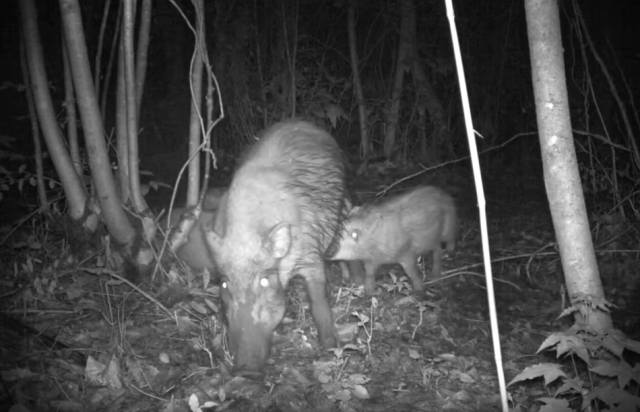
As we reach almost a decade since the tragic incident which displaced over 100,000 individuals, Mother Nature makes her comeback.
A new study published by the University of Georgia reveals the rising abundance of wildlife in rural areas of Fukushima once previously inhabited by humans, but now abandoned after the meltdown of the Fukushima Daiichi nuclear plant in 2011. Over the course of four months, 160 cameras set up in the evacuated zones have taken 267,000 photos of more than 20 different animal species. The video below, courtesy of @University of Georgia, shows a sample of the study’s photos:
What makes this study important is that there was no previous data available in regards to how the aftermath of the nuclear disaster affected wildlife populations in evacuated areas, making the study’s findings a boon to scientists researching animal behavior patterns. The study also helps wildlife biologists and ecologists answer the pressing question: how does a disaster such as a nuclear meltdown affect the behavioral patterns of wildlife in a specific area?
Though the video posted above is less than half a minute, we can see several different examples of wildlife roaming undisturbed through the forests of evacuated zones:
▼ Masked palm civets, a distant cousin to the mongoose, making their way through the dark
▼ Macaques playing within a bamboo grove
▼ A fox waking up beneath a snow-covered pine
While the animals shown above have no deviations in their typical behavioral patterns, scientists at the University of Georgia have specifically discovered different behavior for two species in the absence of humans: the Japanese boar and the Japanese serow. Japanese boar in evacuated zones have been found to have become more active in the daytime, possibly due to the lack of human interference.
Another animal that has shown deviations from normal behavioral pattern is the Japanese serow. Heralded as a national symbol of Japan’s forests, the goat-antelope, considered a rare sight, has been caught frequently by the study’s cameras. Scientists hypothesize that the Japanese serows in the evacuated areas have changed their movements due to the widening range of the Japanese boar.
▼ The rare serow captured in plain view
An abridged, translated version of the study garnered a variety of responses from Japanese netizens:
“No humans to hunt them or destroy their habitats. This must be heaven for the animals.”
“Seems like a similar situation to Chernobyl.”
“I wonder if any of the animals mutated due to radiation exposure?”
It should be noted that this study is not focused on how radiation can affect animals and potential mutations to their genes, but rather what type of behavioral changes occur within animal populations in the wake of a nuclear meltdown. While only time can tell how the wildlife near Fukushima’s inhabitable zone will genetically evolve, the profusion of animals is a testament of not only Mother Nature’s strength, but also a symbol of the resilience of those who choose to stay in the now evacuated zones.
Source: UGA Today via Jin
Images: YouTube/University of Georgia
● Want to hear about SoraNews24’s latest articles as soon as they’re published? Follow us on
Facebook and Twitter!